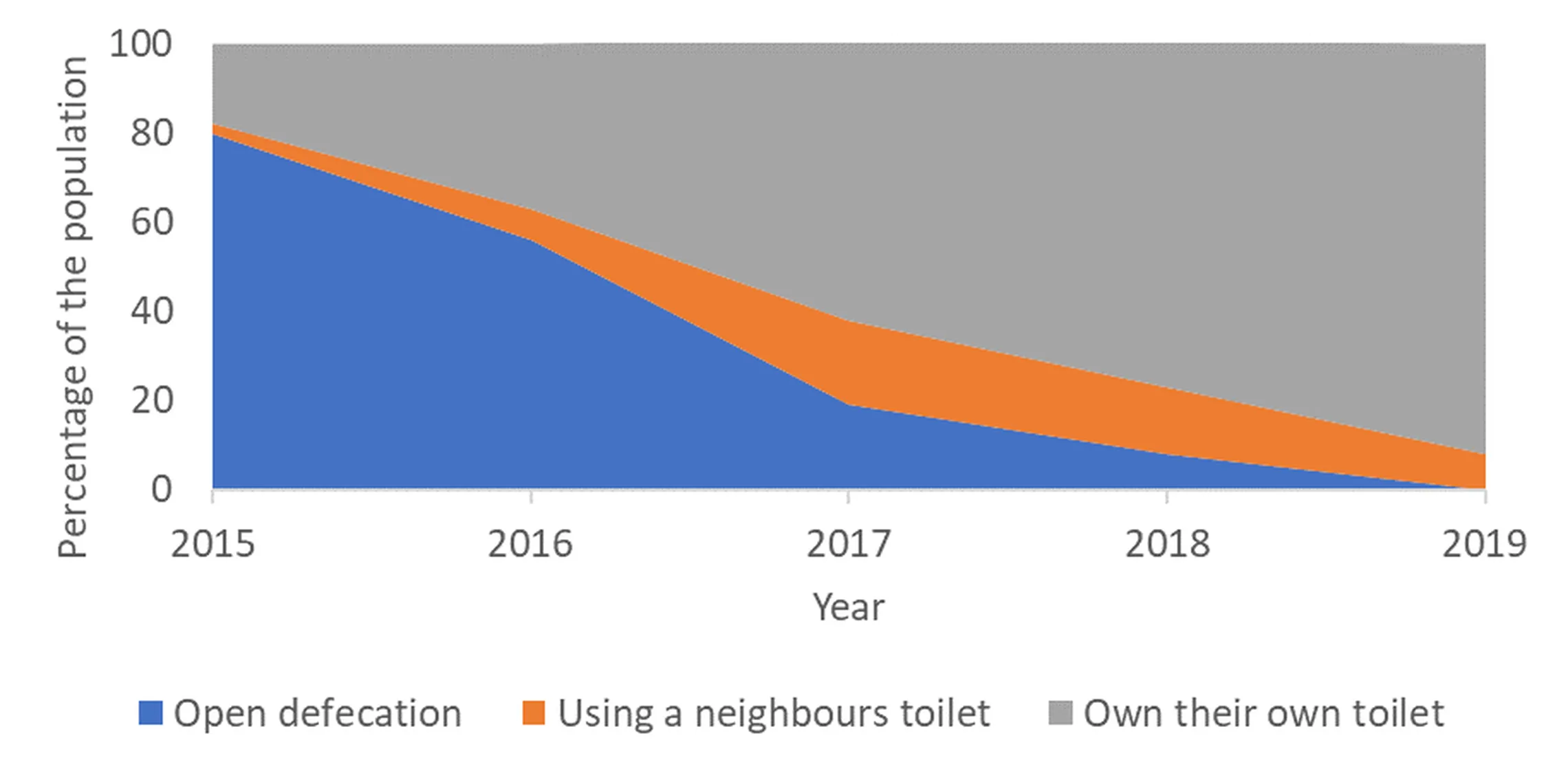Eliminating open defecation in Cambodia…one district at a time

Cambodia’s fourth open defecation free (ODF) district was made official on 13 December 2019, after the government-led external verification team’s confirmation. With the district meeting all requirements set by the Ministry of Rural Development’s (MRD) ODF Guidelines, all communes and villages in Chum Kiri district, Kampot province were verified as ODF.
Mr Long Vanchan, District Deputy of Chum Kiri said, ‘I am very happy to see our district become ODF. It is unbelievable! We started with 15% sanitation coverage before SNV came in 2015. And now everyone has access to a toilet.’
With financial support from the Stone Family Foundation and technical support from SNV and MRD, the Chum Kiri district government has been working towards an ODF status since 2015. Applying SNV’s Sustainable Sanitation and Hygiene for All (SSH4A) product, the programme commenced in 2015. Back then, 80% of the district’s 50,000 residents were defecating in the open.

Figure 1: Sanitation coverage in Chum Kiri from 2015 to 2019
Overcoming open defecation practice
Over the past five years, the sanitation situation in the district has seen incremental transformation. This was made possible through a coordinated effort to generate demand for toilets, build the capacity of local latrine producers and masons, and strengthen local sanitation governance.
Latrine producer Ms Teth Chanthon noted, ‘We are very happy to see this achievement, which we have also contributed to. Thanks to SNV for building our capacity to produce quality latrines.’
From 2015 until 2017, open defecation practice fell rapidly as more well-off households were convinced of the need to invest in their own toilet – or at the very least, to share their toilet with a neighbour (as per government guidelines). From 2017 to 2019, household ownership of a latrine rose to 92% (from a baseline of 64%), and access to 100%. Progress in ownership was supported by a smart subsidy programme [1] for socioeconomically disadvantaged households [2], and through the promotion of household-owned toilets, over toilet sharing.
Moving beyond ODF
In 2018, SNV broadened its technical support to sub-national authorities through the promotion of safe faecal sludge management. With most of the toilets in Chum Kiri fairly young, and on-site pits yet to fill up, awareness raising and faecal sludge overflow prevention were deemed timely.

Examining the diversion box of an ATP under construction
In Chum Kiri, pit filling and emptying are predicted to become major issues within the next 5-10 years. Latrine producers have been equipped to upgrade existing pits to an ‘alternating twin-pit’ (ATP) design – whereby one active pit receives faecal sludge, while the faecal sludge content of the filled-up inactive pit gradually dries and composts over at least two years. Composted matter then turns to fertiliser that can be used safely.
Recognising that not all households will pay for an ATP upgrade, SNV has been simultaneously promoting methods for safe household pit emptying – including the burial of faecal sludge underground after the pit has been emptied.
Faecal sludge management is an emerging priority for the authorities of Chum Kiri district, as they continue to monitor sanitation conditions and ensure that households do not revert to old habits.
Written by: Andrew Shantz with inputs from Bunleng Tan
Notes
[1] Where households contribute a small proportion of the actual cost of a latrine in accordance with National Guiding Principles for Latrine Subsidies published by MRD. Subsidies are only initiated in communes that have already achieved a moderate level of sanitation access so as to minimise disturbances to the marketplace.
[2] As indicated by the possession of an ID Poor card – a nation-wide identification system maintained by the Cambodian Government to target subsidies and social benefits to the people living in poverty.